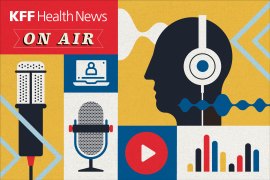‘Three-Parent Babies’ Closer To Reality But Road Ahead Is Still Bumpy
Scientists make incremental progress in swapping nuclear material in human eggs to create healthy embryos without mutations in a type of DNA, according to a new report.
The Washington Post:
Human Embryo Experiment Shows Progress Toward ‘Three-Parent’ Babies
The era of “three-parent babies” (a hyperventilated term for mitochondrial replacement therapy, as we'll explain) is getting incrementally closer — but the path forward remains bumpy. A report published Wednesday in the journal Nature describes a successful, though not flawless, proof-of-concept laboratory experiment. The researchers swapped nuclear material in human eggs to create healthy embryos lacking disease-carrying mitochondrial DNA. (Achenbach, 11/30)
Los Angeles Times:
Experiments With Embryos Suggest Ways To Make 3-Parent IVF Safer For Babies
Using [three-parent IVF], couples obtain eggs from a healthy donor, remove the nuclear DNA and replace it with nuclear DNA from the would-be mother. This combination egg is then fertilized by sperm in a dish, incubated for a few days in the lab and then transferred into the would-be mother’s uterus — just as with regular in vitro fertilization. (Kaplan, 11/30)






